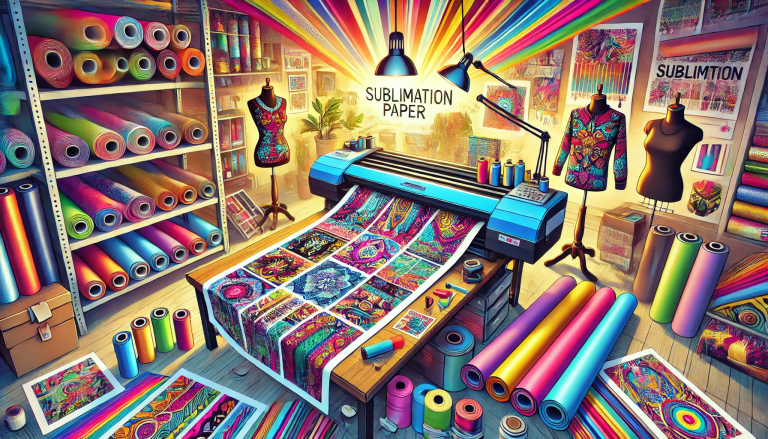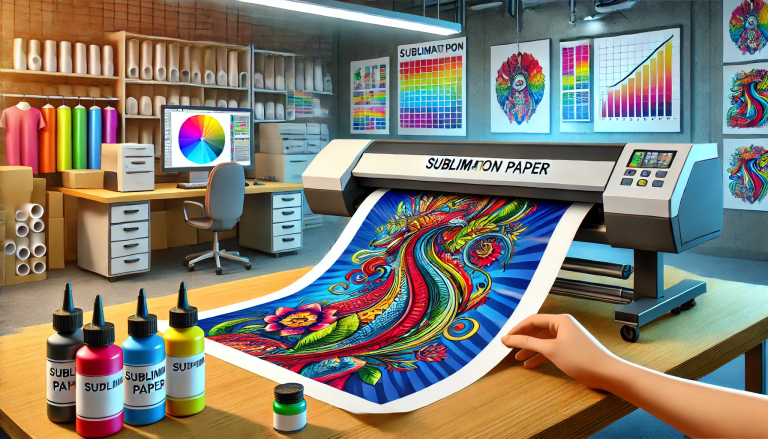“Print with Confidence – Get Professional Results with Tacky Sublimation Transfer Paper!” – SUBLIMATIONTRANSFERPAPER – Tacky Inkjet Sublimation Paper Manufacturer, Sticky Inkjet Sublimation Paper Factory, Made in China
Tacky sublimation transfer paper is a valuable tool in the world of custom printing, especially for achieving high – quality results on various substrates. Here’s a step – by – step guide on how to print on it effectively.
1. Pre – printing Preparation
Printer and Ink Setup
First, ensure that your printer is compatible with sublimation ink. Install the appropriate sublimation ink cartridges according to the printer’s instructions. Sublimation ink is crucial as it has the unique property of turning from a solid to a gas under heat, allowing for permanent transfer onto polyester – based materials. Check that the printer is in good working condition, with clean print heads to avoid any clogging or ink smudging issues during printing.
Selecting the Right Design
Choose or create a digital design that you want to transfer. Make sure the design is in the correct color mode, typically CMYK, which is standard for sublimation printing. A high – resolution design (at least 300 dpi) will result in sharper and more detailed prints. You can use graphic design software like Adobe Photoshop or Illustrator to edit and optimize your design.
Paper Handling
Carefully unpack the tacky sublimation transfer paper. Avoid touching the adhesive side (the tacky side) with your bare hands as oils from your skin can affect the adhesion and print quality. Lay the paper flat on a clean, dry surface to prevent any curling or warping.
2. Printer Settings Adjustment
Paper Type Selection
In your printer’s software, select the appropriate paper type setting. Most printers have an option for “sublimation paper” or a similar setting. This setting adjusts the printer’s ink deposition and drying time. Since tacky sublimation transfer paper may have different absorption properties compared to regular paper, the correct setting ensures that the ink is applied evenly and dries properly.
Print Quality and Speed
Set the print quality to the highest available option. This will result in a more detailed and vibrant print. However, be aware that higher print quality may slow down the printing speed. Adjust the print speed according to your needs, but prioritize quality for the best results. If you’re printing a large number of copies, you can balance quality and speed to optimize the process.
3. Printing Process
Loading the Paper
Open the paper tray of your printer. Place the tacky sublimation transfer paper with the printable side (usually the non – tacky side) facing down. Make sure the paper is aligned properly in the tray to prevent any misfeeds. Close the paper tray gently to avoid dislodging the paper.
Initiating the Print
Send the print job to the printer. While the paper is printing, avoid moving or disturbing the printer. Keep an eye on the printing process to ensure that there are no issues such as paper jams or ink smudging. Once the printing is complete, allow the paper to dry completely. The drying time can vary depending on factors like the amount of ink used and the environmental conditions. You can use a fan or place the paper in a well – ventilated area to speed up the drying process.
4. Post – printing Handling
Inspecting the Print
After the paper is dry, carefully inspect the print for any defects. Look for streaks, smudges, or uneven color distribution. If you notice any issues, you may need to adjust your printer settings or clean the print heads and reprint. A high – quality print on the tacky sublimation transfer paper is essential for a successful transfer.
Storing the Paper
If you’re not going to use the printed tacky sublimation transfer paper immediately, store it in a cool, dry place away from direct sunlight. Keep it flat to prevent any curling or damage to the adhesive side. Proper storage will ensure that the paper maintains its tackiness and print quality for future use.
By following these steps, you can effectively print on tacky sublimation transfer paper and create stunning sublimation prints for a variety of applications.




